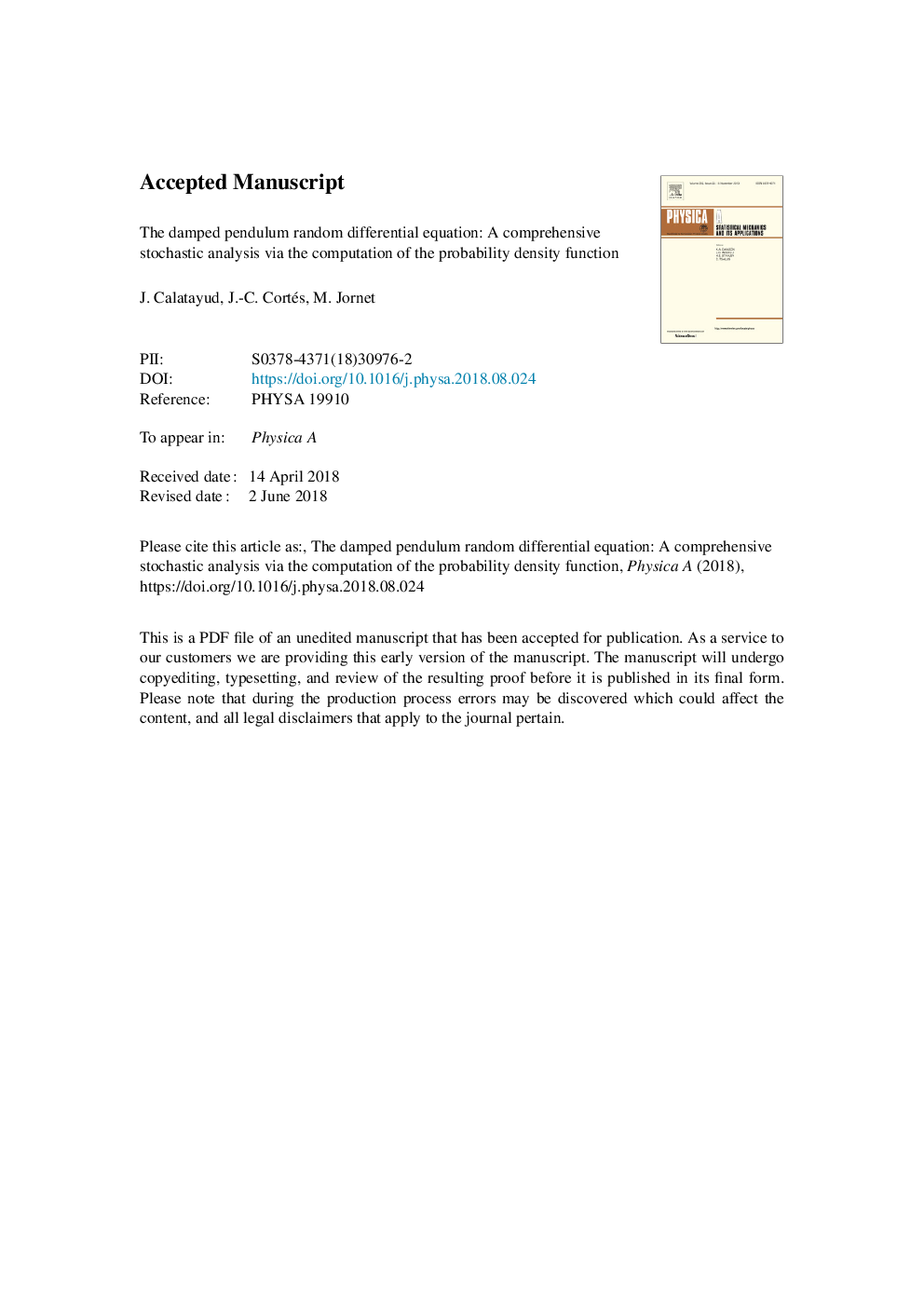| Article ID | Journal | Published Year | Pages | File Type |
|---|---|---|---|---|
| 7374451 | Physica A: Statistical Mechanics and its Applications | 2018 | 29 Pages |
Abstract
This paper deals with the damped pendulum random differential equation: XÌ(t)+2Ï0ξXÌ(t)+Ï02X(t)=Y(t), tâ[0,T], with initial conditions X(0)=X0 and XÌ(0)=X1. The forcing term Y(t) is a stochastic process and X0 and X1 are random variables in a common underlying complete probability space (Ω,F,P). The term X(t) is a stochastic process that solves the random differential equation in both the sample path and in the Lp senses. To understand the probabilistic behavior of X(t), we need its joint finite-dimensional distributions. We establish mild conditions under which X(t) is an absolutely continuous random variable, for each t, and we find its probability density function fX(t)(x). Thus, we obtain the first finite-dimensional distributions. In practice, we deal with two types of forcing term: Y(t) is a Gaussian process, which occurs with the damped pendulum stochastic differential equation of Itô type; and Y(t) can be approximated by a sequence {YN(t)}N=1â in L2([0,T]ÃΩ), which occurs with Karhunen-Loève expansions and some random power series. Finally, we provide numerical examples in which we choose specific random variables X0 and X1
and a specific stochastic process Y(t), and then, we find the probability density function of X(t).
Related Topics
Physical Sciences and Engineering
Mathematics
Mathematical Physics
Authors
J. Calatayud, J.-C. Cortés, M. Jornet,
